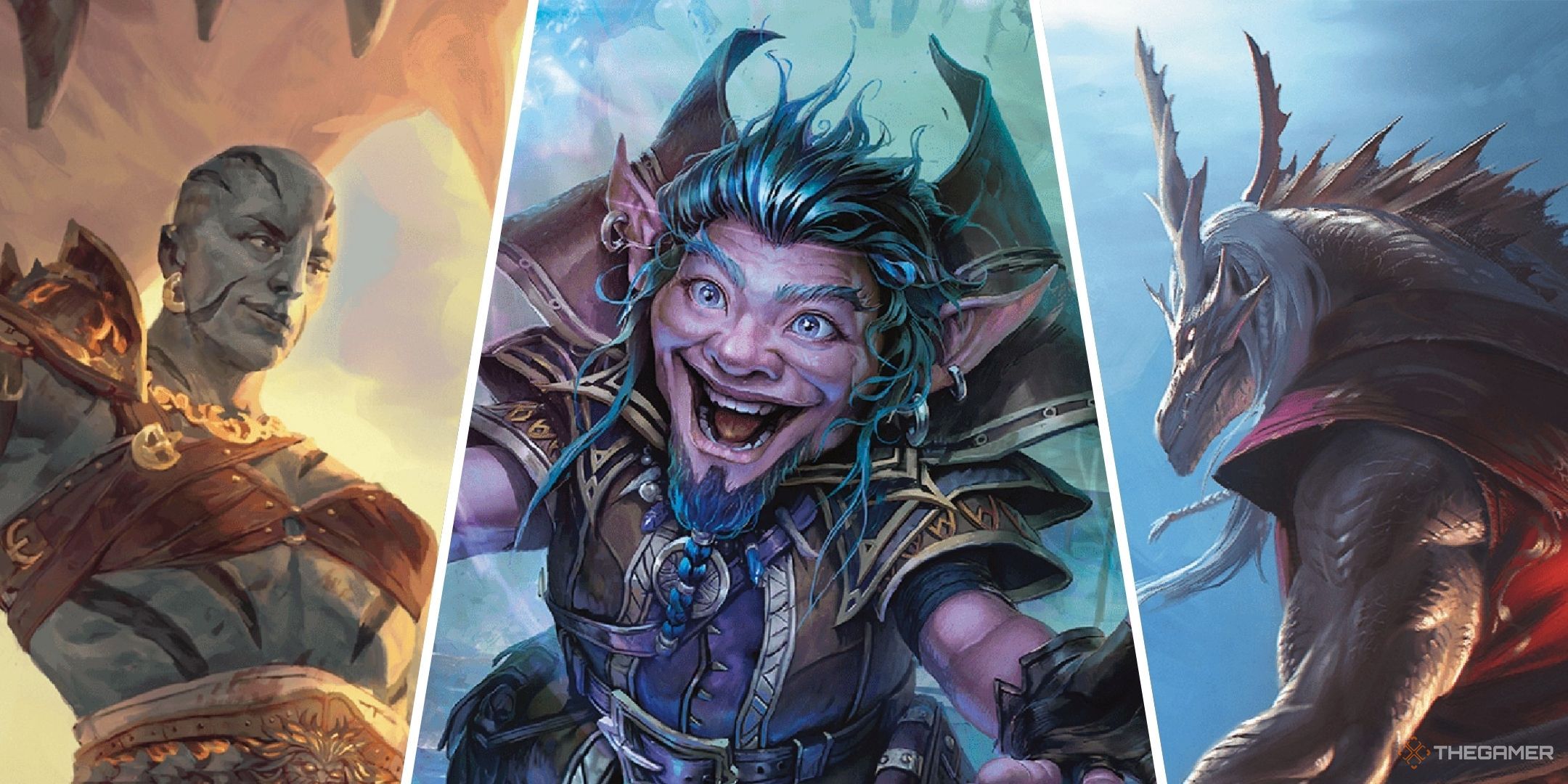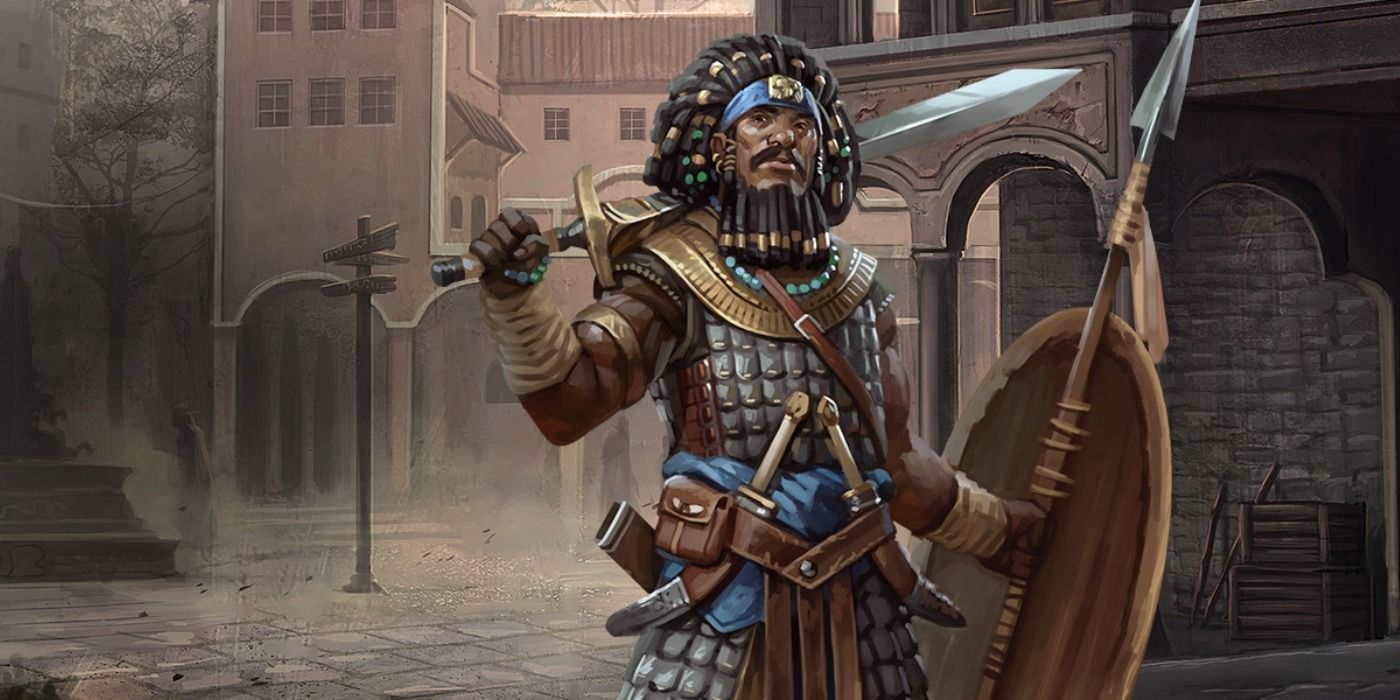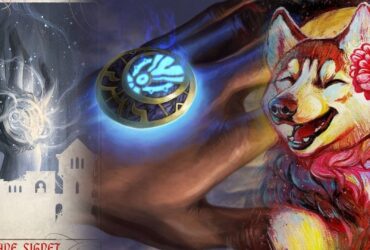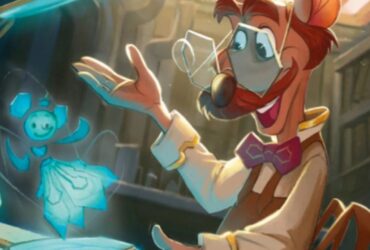It’s probably easier than it’s ever been for gaming enthusiasts to get into Dungeons & Dragons. With the popularity of actual play podcasts and video series like Critical Role and Dimension 20, a new generation of gamers has been inspired to join the ranks of D&D devotees. Part of the draw is the choice of D&D classes that let players customize and role-play their own individual characters.

Related
Dungeons & Dragons: Best Background For Each Class In The 2024 Player’s Handbook
All adventurers came from somewhere.
Much of the gameplay variation in D&D comes from which character class people use as they give players access to abilities, spells, and perks. However, not all classes are created equal for brand-new players. Which are the best D&D classes for beginners?
Updated on November 17, 2024 by Marissa Fiore: With the launch of the 2024 Player’s Handbook, D&D is as accessible as ever and continues to grow, both in popularity and with changes that benefit many of the classes. This list as been updated to include an additional class as well as to conform to current publishing standards.
16
Multiclass
Complexity: High
Multiclassing is probably the most challenging thing you can do if you’re playing the game for the first time. It consists of having two (or more) classes on the same character, such as being a Barbarian-Rogue, for example. Some combinations are incredibly powerful, but you have to decide by yourself how many levels of each class you’ll take, and without understanding the game, that’ll be a lot more difficult than simply getting whatever feature your class will offer when you level up.
Still, if you are up to the challenge, we’d recommend asking your Dungeon Master for feedback on your combinations and taking their insight into consideration. You can also find an online build and stick to it, but then you won’t have much input on your character.
In Chapter Two of the 2024 Player’s Handbook, each class is given a complexity listing, which has been included with this list.
15
Artificer
Complexity: High
Artificers are not in the main Handbook – Instead, you’ll find them in Tasha’s Cauldron of Everything. Their idea is to be a scientist-like figure, quantifying magic and using it in unique ways, as well as creating special equipment for yourself or your friends.

Related
Dungeons & Dragons: 10 Best Cantrips For Artificers
If you’re playing as an Artificer in your D&D campaign, you’ll want to use these cantrips.
However, to pull that off properly, you need to be familiar with how the game works. Otherwise, you may feel lost when creating your items, unsure which of them will be helpful to you and even more so to your friends, as you’ll also have to understand their character to build them special items.
14
Wizard
Complexity: Average
Wizards drag a lot of attention to themselves when newcomers see their options. Among the spellcasters, they offer the widest variety, and in terms of raw power and overall potential, Wizards are one of the most powerful classes in the game. However, that immense variety in builds and spells makes them a complicated choice for new players.
Wizard is the type of class that, if you want to do it efficiently, you need to map out what you’ll get in future levels – create a build for your character, in other words. Still, if you want to give it a try either way, we recommend Evocation – so you can explode things without compromising your friends – or Abjuration – so you won’t be as squishy as the average Wizard.
13
Cleric
Complexity: Average
Clerics are one of the most popular support options, being exceptional healers, although they can also be formidable combatants, depending on how you want to build them. Still, being a support in a game that you’re still trying to get familiar with is complicated, mainly because your lack of understanding of the game can also compromise the rest of the group.

Related
Dungeons & Dragons: 9 Deities For Evil Clerics
Here are the best Deities for evil clerics in D&D.
Still, they are a fun option, being a class that can fight with weapons and magic – they’re not the only class that does so, but they’re a fun option in this regard. Regarding roleplaying, you may find it particularly difficult or easy to portray a religious figure, depending on how you perceive such topics in real life – that’s more on you.
12
Bard
Complexity: High
Bards tend to fill something of a support role in combat, particularly with their Bardic Inspiration ability. They’re also full casters with access to cantrips and various spells. Unlike Clerics and Druids, they only know a certain amount of chosen spells at any given time.
Plus, Bards possess not-so-insignificant physical combat skills and thus have much to offer a player. However, it can also be difficult to keep so many abilities straight, let alone leverage them optimally. This is one of the D&D classes that ranks lowest since support classes can be difficult for first-time players. Lastly, they are notorious for being amazing options for social interactions due to their Charisma, which is challenging to pull off if you’re new to the game or improv scenarios in general.
11
Monk
Complexity: High
Truth be told, Monks are not particularly difficult to play with. However, they’re also not the most optimized class in the game. They are powerful, but that relies on being clever with particular species or feat picks and being familiar with your strengths. After all, their damage output isn’t the best, and they’re a bit fragile.

Related
Dungeons & Dragons: 14 Best Magic Items For Monks
These D&D magic items were almost made for monks.
All that said, they can give multiple attacks right at level one, and they can avoid most of the stuff your DM throws at you, with things like Evasion and ending certain conditions through Chi, among others. Not the best martial (non-magical classes) to begin with, but it’s doable.
10
Druid
Complexity: High
Druids have a similar problem here; They are not difficult, but understanding the game goes a long way. Their most famous mechanic is their power to transform into animals, and many of them have official stats, from cats to octopuses or bears. Knowing your options beforehand is nice, but it requires game knowledge or lots of reading.
Still, this is a class where it’s very difficult to do wrong. Known as one of the most overpowered classes in the game, they can fit any role, causing lots of damage, tanking, or healing. You can even mix things, such as causing damage, but having healing spells in case the healer gets knocked down.
9
Sorcerer
Complexity: High
Sorcerers function as a pretty straightforward spellcasting class. Unlike Wizards, who get their powers from book learning, Sorcerers have magic in their blood. They learn more about elemental combat with many combat cantrips and heavy-hitting spells that are easy for most players to understand. To compensate for the lack of difficulty in creating the character, they lack the spell variety from Wizards.

Related
Dungeons & Dragons: 7 Ways The Sorcerer Class Is Changing In The 2024 Player’s Handbook
Sorcerers have some new powers in Dungeons & Dragons’ 2024 Player’s Handbook.
Their Metamagic feature allows for some strategizing without being overwhelming. There are also some fun options for the origin of the character’s magic, like the Wild Magic subclass, which has the potential for chaotic effects any time a spell is cast. They’re also a fantastic choice for social interaction due to their need of having a high Charisma.
8
Warlock
Complexity: High
Warlocks are the best spellcasting D&D class for beginners. They have access to many fewer spells and have fewer spell slots than the other magical classes. However, those spells hit harder and regenerate faster. Warlocks regain their spell slots on a short rest as opposed to a long one, so they don’t have to ration their magic as strictly as a Wizard usually does.

Related
Dungeons & Dragons: 9 Ways To Break A Warlock Pact
If a warlock in your campaign wants to break their pact, here are some ways they can do so.
In addition, they take a lot of advantage from their cantrips, which have no casting limit, and they have Eldritch Invocations, giving them unique perks or even allowing them to use low-level spells without spending spell slots. They also have a powerful backstory potential due to their patron, the being who gives them power in the first place.
7
Bloodhunter
Complexity: Average
Bloodhunter is not one of the classes that you will find in either the 2014 or 2024 Player’s Handbooks. It was instead created by Matthew Mercer of voice acting and Critical Role fame. Although not in the Player’s Handbook, the Bloodhunter has been made an official class option and can be used in creator creation with DnD Beyond.
In comparison to the other martial classes, Bloodhunters are a bit more complex thanks to their Blood Maledict and access to spells. However, when compared to classes that focus primarily on spellcasting, magic isn’t your only trick, as you will typically have more hit points and more options if you find yourself in a position where you can’t safely cast. This is a good option for those curious about spellcasting but not ready to do the deep dive into being a wizard or the like.
6
Ranger
Complexity: Average
Rangers offer an opposite problem to the likes of Monks or Druids we mentioned; They’re easy to use, but they aren’t always combat-oriented, meaning you may have to get creative in the exploration part of the game here. Still, they can cause a lot of damage, are very versatile in terms of weapon choices, and can cast some spells, too.

Related
Dungeons & Dragons: 2024 Player’s Handbook Class Tier List
If you want to know how powerful and versatile your class remains in 2024 when compared to others, please check our D&D tier list.
They’re perfect for campaigns where survival in complicated environments is part of it, but they work well in traditional dungeon crawling as well. Expansion books such as Xanathar’s Guide to Everything have interesting subclass options.
5
Paladin
Complexity: Average
Paladins are a solid choice for those unfamiliar with the magic system; they can use it, but they’re powerhouses without it, too, since you can choose to use your spell points to use Smite, which increases the damage of your attack, instead of using them actually to cast spells. They can also wield any weapon properly, giving a lot of versatility among being a strong damage dealer or an effective tank. Lastly, they have auras, which gives them – and their allies – all sorts of passive bonuses, so you’ll help your group simply by being near them.
In terms of roleplaying, they are strong religious figures most of the time, and they have an oath they need to follow – it changes a bit depending on your subclass. Still, nothing stops you from being a bit neutral or even evil by following evil deities or breaking your oath, giving you versatility in how you’ll play the character, too.
4
Rogue
Complexity: Low
Rogues, when played well, can be terrifying foes on a battlefield. Even when players don’t have a firm grasp of the class, they still tend to be very useful both in and out of combat. Regarding abilities, Rogues have many options that can sometimes be difficult to remember, but most of the time, as long as players remember to use Sneak Attack, they’ll be golden.

Related
Dungeons & Dragons: Every Species’ Lifespan, From Lowest To Highest
Not all adventurers stay young forever. Here are the lifespans of each species in the 2024 Player’s Handbook.
They’re the best D&D class for beginners who want to play a martial class without swinging around a huge axe or getting in close for a flurry of attacks. Plus, they’re the trusty standby for everyone who wants to make a cool, broody antihero as their character.
3
Barbarian
Complexity: Average
If all a player wants to do is take hits and dish out damage, the Barbarian is probably the class for them. Not only do they have the highest hit point pool of any class, but their Rage ability also grants you resistance to the most common forms of damage. They’re basically designed to pummel the bad guys until they drop.
Being such a straightforward class, some new players may also choose to multi-class as barbarians. There are also Barbarian subclasses that can make the class more complicated and add more options. The basic Barbarian strategy of “rage and smash” still applies, making this one of the best D&D classes for beginners.
2
Fighter
Complexity: Low
This is the class for new players and the archetypal choice for the entire game. Fighters excel at one thing (take a guess) and there happens to be quite a bit of combat in any D&D adventure. That’s why gear can play an important role with any class, but especially for the Fighter.
As they gain levels, Fighters become more resilient, more versatile, and most importantly they gain the ability to hit people more often. If you are ever unsure what class would be best, it’s hard to go wrong with a good old stock-standard Fighter.
1
The One Players Want To Play Most
At the end of the day, D&D is about hanging out with friends, roleplaying, and having a blast while tuning out the real world for just a little while. As such, if someone wants to come out of the gate as a Bard-Wizard with no previous experience, that’s their business.
So long as you aren’t actively harming the experience, whatever class you choose shouldn’t really matter. A good Dungeon Master can adapt, right? In any case, picking up the Player’s Handbook, bestiary, and boning up on class descriptions can help quite a bit.

Related
How To Fill Out A Character Sheet Using The 2024 Player’s Handbook
Filling out a character sheet using the 2024 Player’s Handbook for the first time? Here’s everything you need to know.
Source link




























Leave a Reply